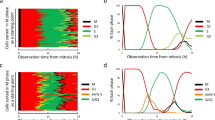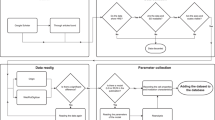Abstract
The xCELLigence real-time cell impedance system uses a non-invasive and label-free method to create a cell index that is a composite measure of cell proliferation. The aim of this study was to evaluate xCELLigence against clonogenic assay (gold standard) for measuring radiobiological effects and radiation-induced bystander effects (RIBE). A radiobiological study was conducted by irradiating EMT6.5, 4T1.2 and NMUMG cell lines with different radiation doses, while a RIBE study was done using transfer of conditioned media (CM) harvested from donor to the same type of recipient cell (EMT6.5, 4T1.2, NMUMG, HACAT and SW48). CM was harvested using two protocols which differed in the dose chosen and the exposure to the recipient cells. Results showed that xCELLigence measured a radiobiological effect which correlated with the clonogenic assay. For the RIBE study, no statistically significant differences were observed between xCELLigence or clonogenic survival in control or recipient cells incubated with CM in protocol one. However, there was a significant increase in cell index slope using CM from EMT-6.5 cells irradiated at 7.5 Gy compared with the control group under the second protocol. No other evidence of RIBE was detected by either xCELLigence or clonogenic assay. In conclusion, xCELLigence methods can measure radiobiological effects and the results correlate with clonogenic assay. We observed a lack of RIBE in all tested cell lines with the clonogenic assay; however, we observed a RIBE effect in EMT6.5 cells under one particular protocol that showed RIBE is cell type dependent, is not universally observed and can be detected in different assays.









Similar content being viewed by others
References
Asur RS et al (2012) Spatially fractionated radiation induces cytotoxicity and changes in gene expression in bystander and radiation adjacent murine carcinoma cells. Radiat Res 177(6):751–765
Atienza JM et al (2006) Dynamic and label-free cell-based assays using the real-time cell electronic sensing system. Assay Drug Dev Technol 4(5):597–607
Azzam EI, de Toledo SM, Little JB (2001) Direct evidence for the participation of gap junction-mediated intercellular communication in the transmission of damage signals from alpha-particle irradiated to nonirradiated cells. Proc Natl Acad Sci USA 98(2):473–478
Baskar R (2010) Emerging role of radiation induced bystander effects: cell communications and carcinogenesis. Genome Integr 1(1):13
Belyakov OV et al (2006) Bystander-induced differentiation: a major response to targeted irradiation of a urothelial explant model. Mutat Res Fundam Mol Mech Mutagen 597(1–2):43–49
Boyd M et al (2006) Radiation-induced biologic bystander effect elicited in vitro by targeted radiopharmaceuticals labeled with alpha-, beta-, and auger electron-emitting radionuclides. J Nucl Med 47(6):1007–1015
Butterworth KT et al (2011) Out-of-field cell survival following exposure to intensity-modulated radiation fields. Int J Radiat Oncol Biol Phys 79(5):1516–1522
Franken NAP et al (2006) Clonogenic assay of cells in vitro. Nat Protoc 1(5):2315–2319
Furlong H et al (2013) Apoptosis is signalled early by low doses of ionising radiation in a radiation-induced bystander effect. Mutat Res Fundam Mol Mech Mutagen 741:35–43
Gow MD et al (2010) Induction of bystander response in human glioma cells using high-energy electrons: a role for TGF-beta 1. Radiat Res 173(6):769–778
Groesser T, Cooper B, Rydberg B (2008) Lack of bystander effects from high-LET radiation for early cytogenetic end points. Radiat Res 170(6):794–802
Hei TK et al (2008) Mechanism of radiation-induced bystander effects: a unifying model. J Pharm Pharmacol 60(8):943–950
Kadhim M et al (2013) Non-targeted effects of ionising radiation-Implications for low dose risk. Mutat Res 752(2):84–98
Konopacka M, Rogolinski J, Slosarek K (2011) Bystander effects induced by direct and scattered radiation generated during penetration of medium inside a water phantom. Rep Pract Oncol Radiother 16(6):256–261
Limame R et al (2012) Comparative analysis of dynamic cell viability, migration and invasion assessments by novel real-time technology and classic endpoint assays. PLoS ONE 7(10):e46536
Lyng FM, Howe OL, McClean B (2011) Reactive oxygen species-induced release of signalling factors in irradiated cells triggers membrane signalling and calcium influx in bystander cells. Int J Radiat Biol 87(7):683–695
Morgan WF (2003a) Non-targeted and delayed effects of exposure to ionizing radiation: I. Radiation-induced genomic instability and bystander effects in vitro. Radiat Res 159(5):567–580
Morgan WF (2003b) Non-targeted and delayed effects of exposure to ionizing radiation: II. Radiation-induced genomic instability and bystander effects in vivo, clastogenic factors and transgenerational effects. Radiat Res 159(5):581–596
Morgan WF, Sowa MB (2007) Non-targeted bystander effects induced by ionizing radiation. Mutat Res Fundam Mol Mech Mutagen 616(1–2):159–164
Mothersill C, Seymour C (1997) Medium from irradiated human epithelial cells but not human fibroblasts reduces the clonogenic survival of unirradiated cells. Int J Radiat Biol 71(4):421–427
Mothersill C, Seymour CB (1998) Cell-cell contact during gamma irradiation is not required to induce a bystander effect in normal human keratinocytes: evidence for release during irradiation of a signal controlling survival into the medium. Radiat Res 149(3):256–262
Mothersill C, Seymour C (2006) Radiation-induced bystander effects: evidence for an adaptive response to low dose exposures? Dose Response 4(4):283–290
Mothersill C, Seymour CB, Joiner MC (2002) Relationship between radiation-induced low-dose hypersensitivity and the bystander effect. Radiat Res 157(5):526–532
Mothersill C, Seymour RJ, Seymour CB (2004a) Bystander effects in repair-deficient cell lines. Radiat Res 161(3):256–263
Mothersill CE, Moriarty MJ, Seymour CB (2004b) Radiotherapy and the potential exploitation of bystander effects. Int J Radiat Oncol Biol Phys 58(2):575–579
Mothersill C et al (2014) Transmission of signals from rats receiving high doses of microbeam radiation to cage mates: an inter-mammal bystander effect. Dose Response 12(1):72–92
Nagasawa H, Little John B (1992) Induction of sister chromatid exchanges by extremely low doses of alpha particle. Cancer Res 52:4
Nagasawa H et al (2005) Role of homologous recombination in the alpha-particle-induced bystander effect for sister chromatid exchanges and chromosomal aberrations. Radiat Res 164(2):141–147
Prise KM, O’Sullivan JM (2009) Radiation-induced bystander signalling in cancer therapy. Nat Rev Cancer 9(5):351–360
Prise KM, Folkard M, Michael BD (2003) A review of the bystander effect and its implications for low-dose exposure. Radiat Prot Dosim 104(4):347–355
Puck TT, Marcus PI (1956) Action of X-rays on mammalian cells. J Exp Med 103(5):653
Roa W et al (2011) Real-time cell-impedance sensing assay as an alternative to clonogenic assay in evaluating cancer radiotherapy. Anal Bioanal Chem 400(7):2003–2011
Shao C et al (2006) Calcium fluxes modulate the radiation-induced bystander responses in targeted glioma and fibroblast cells. Radiat Res 166(3):479–487
Shao C, Folkard M, Prise KM (2008) Role of TGF-beta 1 and nitric oxide in the bystander response of irradiated glioma cells. Oncogene 27(4):434–440
Sowa MB et al (2010) Lack of evidence for low-LET radiation induced bystander response in normal human fibroblasts and colon carcinoma cells. Int J Radiat Biol 86(2):102–113
Terzoudi GI et al (2010) Investigation of bystander effects in hybrid cells by means of cell fusion and premature chromosome condensation induction. Radiat Res 173(6):789–801
Veldwijk MR et al (2014) The biological effect of large single doses: a possible role for non-targeted effects in cell inactivation. PLoS ONE 9(1):e84991
Vines AM et al (2008) Bystander signal production and response are independent processes which are cell line dependent. Int J Radiat Biol 84(2):83–90
Vines AM et al (2009) Bystander effect induced changes in apoptosis related proteins and terminal differentiation in in vitro murine bladder cultures. Int J Radiat Biol 85(1):48–56
Warenius HM, Bleehen NM (1982) In vivo in vitro clonogenic assays in a human-tumor xenograft with a high plating efficiency. Br J Cancer 46(1):45–50
West CML, Sutherland RM (1986) A radiobiological comparison of human-tumor soft-agar clonogenic assays. Int J Cancer 37(6):897–903
Zyuzikov NA et al (2011) Lack of nontargeted effects in murine bone marrow after low-dose in vivo X irradiation. Radiat Res 175(3):322–327
Acknowledgments
The study was funded in part by a Project Grant (606614) from the National Health & Medical Research Council (NHMRC), Australia.
Author information
Authors and Affiliations
Corresponding author
Ethics declarations
Conflict of interest
All authors declare no conflicts of interest. Premila Paiva and Jeffrey C. Crosbie are recipients of Early Career Researcher Fellowships from the National Health & Medical Research Council (NHMRC), Australia. Mohammad Johari Ibahim receives PhD scholarship from The Ministry of Higher Education, Malaysia.
Ethical approval
This article does not contain any studies with human participants or animals performed by any of the authors.
Electronic supplementary material
Below is the link to the electronic supplementary material.
Rights and permissions
About this article
Cite this article
Ibahim, M.J., Crosbie, J.C., Paiva, P. et al. An evaluation of novel real-time technology as a tool for measurement of radiobiological and radiation-induced bystander effects. Radiat Environ Biophys 55, 185–194 (2016). https://doi.org/10.1007/s00411-016-0641-x
Received:
Accepted:
Published:
Issue Date:
DOI: https://doi.org/10.1007/s00411-016-0641-x




